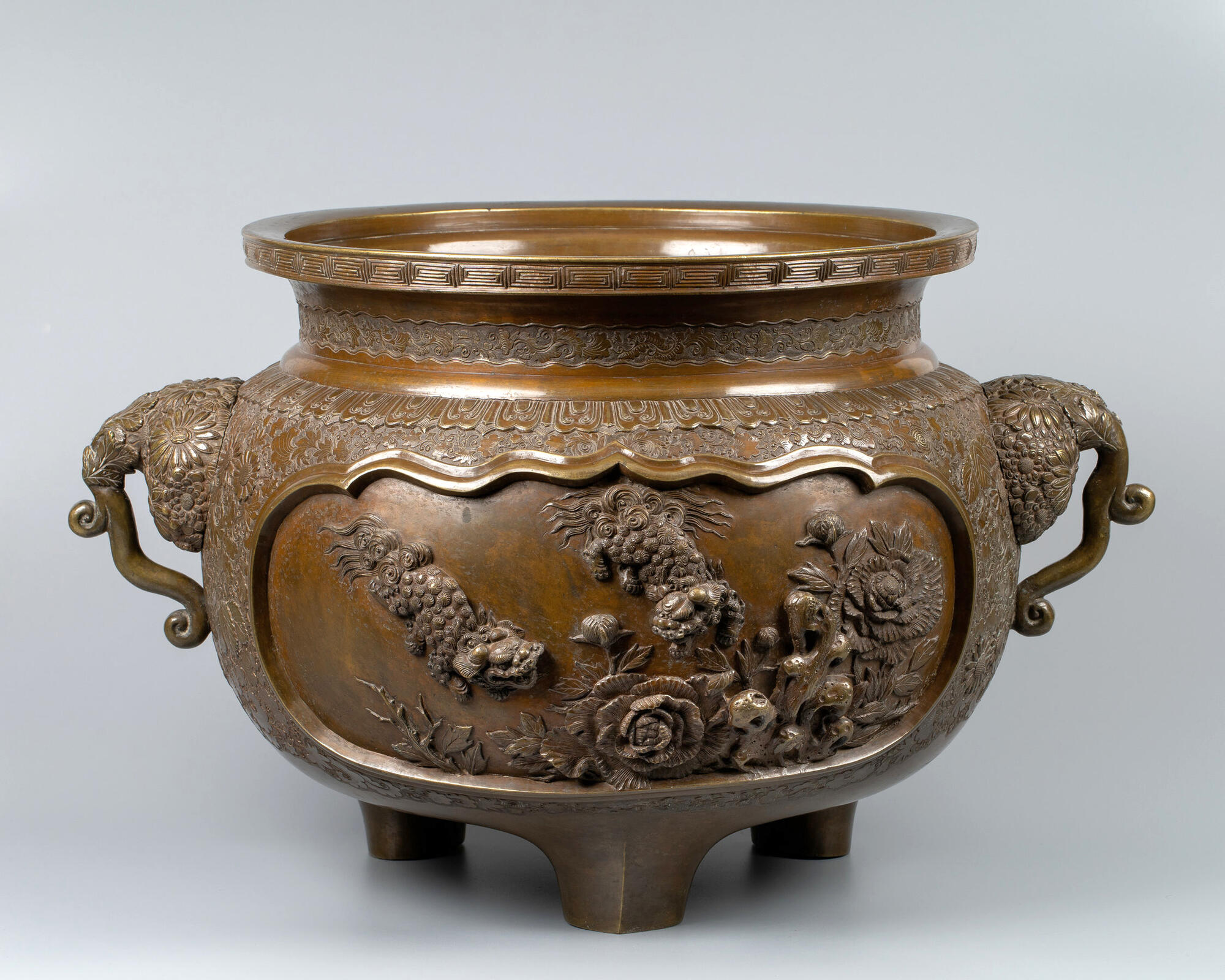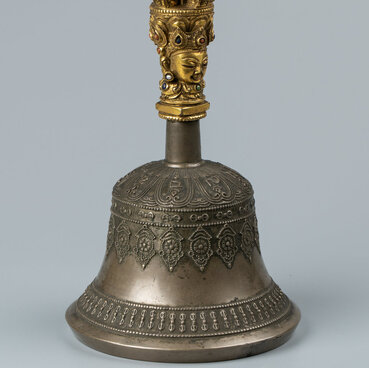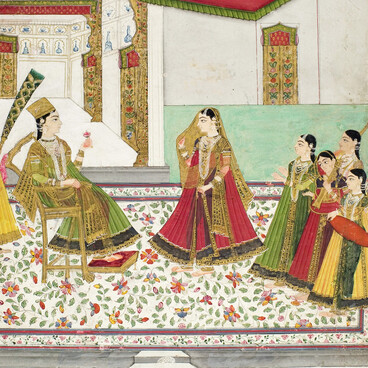The Samara Regional Art Museum displays a number of examples of Japanese bronze casting. One of them is the traditional hibachi brazier. Its massive body is decorated with flowers in the Nishikide style (that is, the images cover the entire surface of the item), and one can see images of lions and peonies in the carved recesses.
Hibachi is a traditional mobile Japanese brazier for heating and cooking, which was placed in the center of the room. At the initial stages of its development (794 — 1185) it was a simple pot for burning charcoal. Sand was poured on the bottom of the pot, and hot coals were placed on the sand, a metal grate was laid down on top to cook food on it. A more advanced and multifunctional type of hibachi was invented at the end of the 19th century.
Until people learned to use iron, non-ferrous metals and their alloys were the main material for the manufacture of weapons, tools, household items and jewelry. The history of how bronze was introduced to Japan is quite peculiar.
Back in the Yayoi period (300 BC — 300 AD), migrants from China who did not want to recognize the power of the Han dynasty moved to the territory of Japan. These settlers from China and Korea brought to the Japanese islands not only rice farming techniques and more advanced agricultural tools, but also bronze and iron objects, as well as processing technologies for these metals. Life on the islands radically changed: crafts and agriculture quickly developed; the general cultural level grew significantly. The Japanese themselves very soon began not only to mine copper and obtain alloys close to bronze, but also to melt old Chinese bronze items, which is confirmed by a comparative chemical analysis. Moreover, in Japan of the Yayoi period, as well as in China, weapons, sacred objects and jewelry were made of bronze. Thus, there was no Copper Age in Japan, and bronze and iron began to be processed there almost simultaneously.
The main theme of Japanese bronze is the beauty of the surrounding world, inhabited by real or fantastic animals and birds. The peculiarity of traditional Japanese art is the accentuated decorative element. In addition, the Japanese always view each individual item as part of a whole.
Hibachi is a traditional mobile Japanese brazier for heating and cooking, which was placed in the center of the room. At the initial stages of its development (794 — 1185) it was a simple pot for burning charcoal. Sand was poured on the bottom of the pot, and hot coals were placed on the sand, a metal grate was laid down on top to cook food on it. A more advanced and multifunctional type of hibachi was invented at the end of the 19th century.
Until people learned to use iron, non-ferrous metals and their alloys were the main material for the manufacture of weapons, tools, household items and jewelry. The history of how bronze was introduced to Japan is quite peculiar.
Back in the Yayoi period (300 BC — 300 AD), migrants from China who did not want to recognize the power of the Han dynasty moved to the territory of Japan. These settlers from China and Korea brought to the Japanese islands not only rice farming techniques and more advanced agricultural tools, but also bronze and iron objects, as well as processing technologies for these metals. Life on the islands radically changed: crafts and agriculture quickly developed; the general cultural level grew significantly. The Japanese themselves very soon began not only to mine copper and obtain alloys close to bronze, but also to melt old Chinese bronze items, which is confirmed by a comparative chemical analysis. Moreover, in Japan of the Yayoi period, as well as in China, weapons, sacred objects and jewelry were made of bronze. Thus, there was no Copper Age in Japan, and bronze and iron began to be processed there almost simultaneously.
The main theme of Japanese bronze is the beauty of the surrounding world, inhabited by real or fantastic animals and birds. The peculiarity of traditional Japanese art is the accentuated decorative element. In addition, the Japanese always view each individual item as part of a whole.






